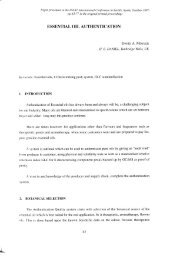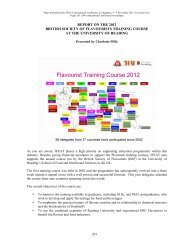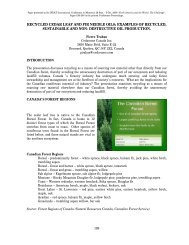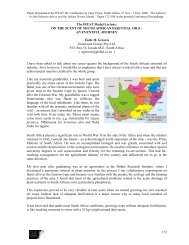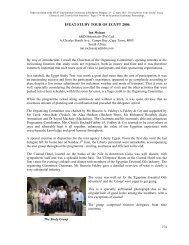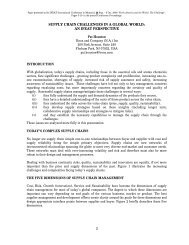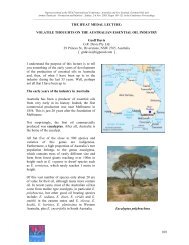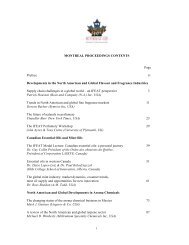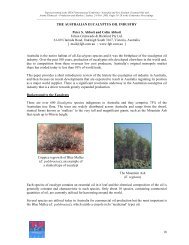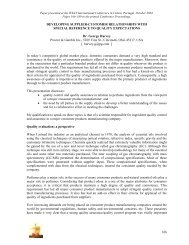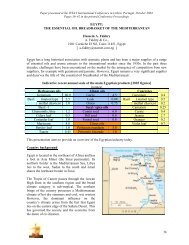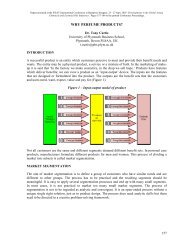You also want an ePaper? Increase the reach of your titles
YUMPU automatically turns print PDFs into web optimized ePapers that Google loves.
Gamma-C9 lactone appears in four notes, tonka-coumarin/coconut/peach/floral, but with the<br />
coconut note dominating. A sugar-tobacco note exists in gamma-C5 and -C6, in delta-C8 and -C9<br />
lactones, and it is particularly strong in gamma-C5 lactones.<br />
The bottom row of Table 3 provides our proposal on the odour character contributed by individual<br />
lactones.<br />
NOTES<br />
Table 3. Odour characteristics of lactones<br />
γ-lactones<br />
δ-lactones<br />
C5 C6 C7 C8 C9 C10 C11 C12 C8 C9 C10 C11 C12<br />
Sugar-Tobacco ● ● ● ●<br />
Tonka-Coumarin ● ● ● ● ● ● ●<br />
Coconut ● ● ● ● ● ●<br />
Peach ● ● ● ● ● ● ●<br />
Floral ● ● ● ● ● ●<br />
Milk-Butter ● ● ● ●<br />
proposal<br />
Jasmin Hay Hay Tuberose Jasmin Milk Rum Osmanthus Plum<br />
Musk Nut Tuberose Cream Whisky Nectarine<br />
Hay Osmanthus Tropical Fruits<br />
Chiral lactones<br />
A single peak is observed when lactones are analyzed by normal gas chromatography,. However,<br />
this peak can represent a 50:50 racemic mixture of two ‘chiral’ enantiomers (spatial mirror<br />
images). Separation of enantiomers is difficult since almost all their physical properties are the<br />
same. It has taken approximately ten years to develop a new technology of chiral gas<br />
chromatography for separating racemates into two peaks by as shown in Figure 1.<br />
Enantiomers are distinguished, according to their spatial structure as an (R)-isomer or an (S)-<br />
isomer. The identity as an (R) or (S)-isomer is determined as shown in Figure 2 by the following<br />
steps :<br />
• First of all, the four groups attached to the stereogenic carbon are identified and given<br />
priorities according to the Cahn-Ingold-Prelog sequence rule (1 = high, 4 = low).<br />
• Once priority numbers have been established, we imagine looking-down the bond from the<br />
stereogenic atom (usually carbon) toward the atom of lowest priority (4, often H). The<br />
other three substituents (1, 2, 3) will be facing you.<br />
• Next connect these three atoms with an arrow running from highest to lowest priority<br />
number (1->2->3).<br />
• If this arrow runs clockwise, the enantiomer is called (R) (Latin: rectus, ‘right’) but if it<br />
runs counterclockwise, it is called (S) (Latin: sinister, ‘left’)<br />
It should be noted that not all lactones in nature are racemic, chiral, optically active or optically<br />
enriched, and this means that they are not racemates.<br />
128



